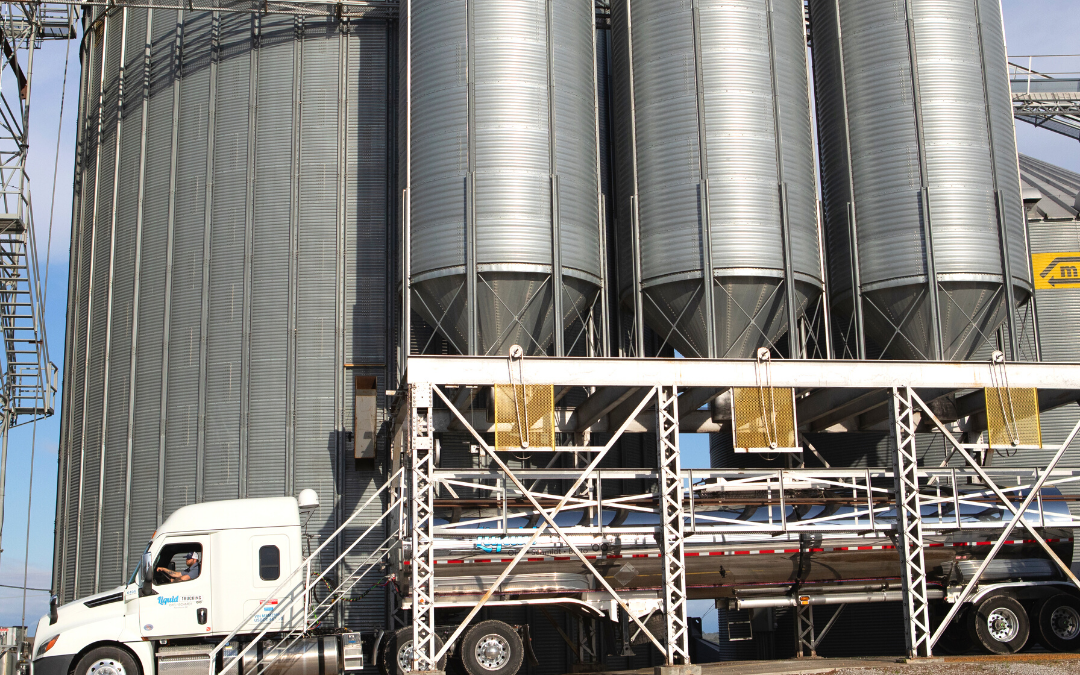The loading and unloading of a bulk liquid tanker can significantly impact the quality and safety of the material. This process is performed by our drivers on a daily basis. In this blog, we’ll go through some of those key points, safety features, and overall expectations to keep in mind when delivering a load to a customer.
This is by no means intended to be an exhaustive guide for how to perform every single aspect of the loading and unloading process. It is impossible to get every single thing you need to know in writing. This blog should serve as a guide to help get you acquainted with the basics and to help remind you that safety and preparedness are the cornerstones of doing the job right.
Loading Process
The first thing you’ll need to do when delivering a product to a customer is to communicate. You’ll want to have clear, open communication with their customer relations team to ensure you’re taking the right amount of the right product to the right tank.
Before a driver starts the loading, they must follow safety protocol. All drivers should have Personal Protective Equipment. This includes a hard hat, face shield, goggles, rubber suit, gloves, pants, and rubber boots. One drop of a corrosive material will damage the skin and cause 1st to 3rd-degree burns.
Before Loading:
- Inspect your truck, trailer, and equipment
- Make sure all trailer compartments are clean and empty
- Verify the material you are loading is correct
During Loading:
- Park your trailer in the correct loading spot
- Turn engine off
- Ensure that all compartment valves are closed
- Connect grounding interlock to the truck if needed
- Open only the compartment you want to fill
- Set meter reader
- Open loading valves slowly
- Don’t leave the trailer while filling
- Close valve when done
- Close the dome cover
- Disconnect grounding interlock
- Inspect equipment
- Drive, you’re all good to go!
Unloading Process
The carrier must know all the procedures required for the unloading procedures for the liquid that they’re transporting. The requirements will vary depending on the product type.
When you’re ready to hook up your pump, hoses, and PTO jackshafts, you need to be aware of how you will unload the trailer. You will either use air pressure or Roper Pump. Anytime you are going to start a pump, make sure to vent the top of the trailer first, otherwise, the trailer could collapse. You always want to know which method you will be using before you arrive at the location.
The next step is to pressurize the hoses to make sure there are no leaks. Whether it’s a bad gasket on a hose or a bad valve on the customer’s side, you want to find out right away. Then you’ll open up your valves and start the pump. The last thing is you’ll open the internal valve on the trailer and take your time while doing so.
Check to make sure there are no leaks at any point in the process, that all connections are secured, that the cam locks are locked down so that they can’t vibrate, move, and cause a spill. If you do all of these things as they are intended, you are looking at between one and one and a half hours from the time you arrive to the time you leave.
Before Unloading:
- Park your trailer in the correct unloading spot
- Turn off truck
- Block off truck with safety cones
- Inspect truck
- Verify that you are unloading the right material to the right tank
- Complete paperwork before unloading
During Unloading:
- Secure the unloading hose after you uncover discharge connections
- Close receiving valves before you attach discharge hose
- Open the receiving tank and make sure all other tanks are closed
- Vent trailer
- Start unloading your material
- Open the discharge valve as carefully as you can while checking for leaks
- Don’t leave the trailer while unloading
- Drain all material in the tank
- Close all valves
- Drain all hoses and fittings and return them to their spot
- Complete paperwork
- Secure caps and manholes
- Drive, you’re good to go!
Closing Thoughts
It’s important for drivers to know all the requirements and procedures when working with bulk liquids. At Liquid Trucking, we’ve been loading and unloading liquids since 1989. We’re built on safety and trust. Give us a call at 844-GO-TANKS!
